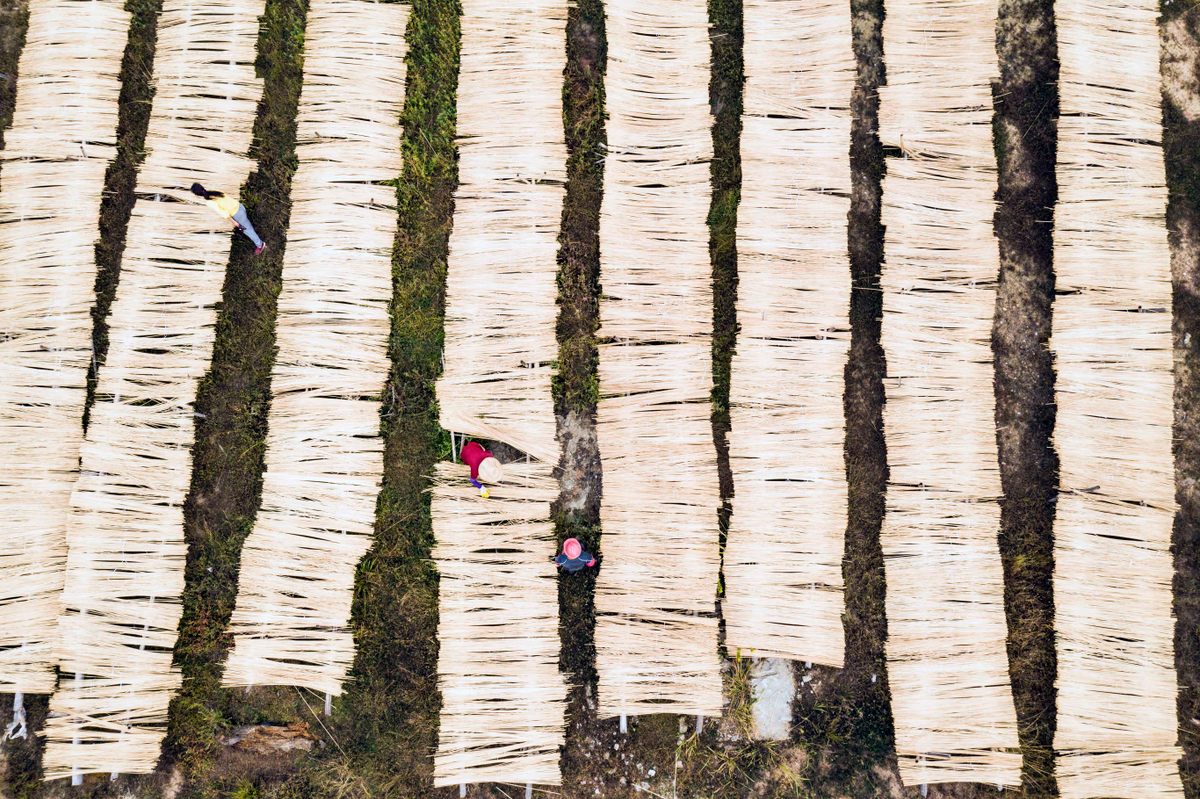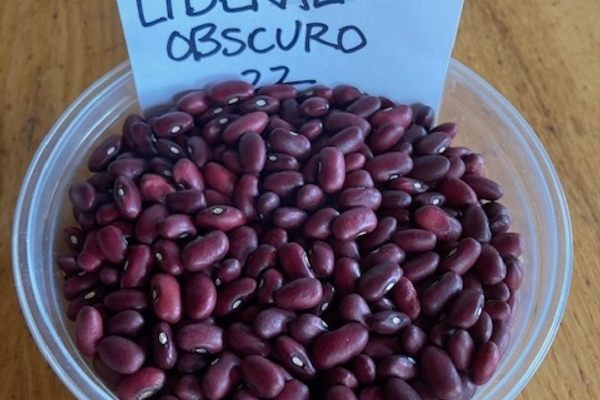

Picturing China’s Bamboo Chopstick Industry From the Sky
Aerial views highlight a sliver of the huge business.
From above, the bamboo sticks look like beige sea urchins, their spines poking out in all directions. From the side, the twisted bundles look like sheaves of wheat, even taller than the people who are wrangling them. In October, the photographer Li Fusun visited a hub of chopstick production in Ji’an, a city of 4.8 million that sits within Jiangxi Province in southeast China. The sea of sticks is so vast that it dwarfs the workers who wade through it.
Ji’an’s bamboo operations are extensive, but also relatively recent, says Q. Edward Wang, author of the book Chopsticks: A Cultural and Culinary History and a historian at Rowan University in New Jersey. The area is now home to a large chopstick factory, Wang says, “but I don’t think it has a long history.”
Broadly speaking, the roots of bamboo-chopstick production in China go deep. “Chopsticks were called ‘zhu’ in pre-20th-century China, written as 箸,筯,櫡, and pronounced the same as ‘zhu’ for bamboo, though with a different intonation,” says Wang. “All these characters for chopsticks have the bamboo radical, indicating the popularity of bamboo chopsticks since ancient times.” Wang points out that mentions of bamboo chopsticks date back to the Guanzi, the 7th century BC political treatise and philosophical tome attributed to the ancient thinker and statesman Guan Zhong.

Across the country, reusable and disposable chopsticks are a big business. Writing in the Los Angeles Times, Daniel K. Gardner, a historian at Smith College who studies environmental issues in modern China, reported that some 100,000 laborers manufacture the implements at 300 factories.
China is the world’s largest producer of disposable chopsticks, the Japan Times reported. Annually, Chinese chopstick factories fashion 80 billion pairs of disposable chopsticks, according to the South China Morning Post, and many of them wind up in the hands of diners elsewhere. China exported 165,000 tons of disposable chopsticks between 2000 and 2006, according to the Japan Times, from which 15 billion pairs wound up in Japan and South Korea. Writing for The New York Times, Rachel Nuwer reported that 77 percent of China’s exported single-use chopsticks are shipped to Japan, 21 percent head to South Korea, and 2 percent land in the United States. Drawing on statistics from China’s forest service, Nuwer noted that “45 percent of disposable chopsticks are made from trees like cotton wood, birch, and spruce,” and the rest were bamboo.
Despite the export market, bamboo chopsticks aren’t equally popular everywhere they land. “In Korea and Japan, bamboo chopsticks are not as widely used as in Vietnam and China,” Wang says. In Japan, where disposable chopsticks are called waribashi, Wang says that bamboo varieties account for maybe 10 percent of chopsticks; in Korea, he adds, it’s probably even less. Where bamboo doesn’t reign, metal, wood, or plastic varieties are more common. Meanwhile, the chopstick industry has been shaken up over the past few decades, as mounting fears about deforestation and mounds of trash have launched Greenpeace campaigns, taxes, and demand for reusable varieties in restaurants and homes, as well as the option to order food-delivery without the cutlery.

As a cooking utensil and eating implement, bamboo has a lot going for it. Because it’s not particularly porous and doesn’t absorb much water, it’s less likely than other woods to be teeming with bacteria, and it can take a lot of abuse in the kitchen. In terms of tensile strength—the extent to which a material can withstand being stretched before it snaps—researchers have found that bamboo holds its own against steel and reinforced plastics. Many bamboo chopsticks can be reused again and again. And unlike trees, bamboo grows at a dizzying pace. “The main reason for bamboo being so useful is that it is basically a grass which grows very fast—you’re looking at 36 inches in a 24-hour period,” says Wang. “It can grow 1.6 inches in an hour. It’s crazy.”
The production, from the rapid growth of the plant to the scope of the finished product, is hard to picture. Envisioning 80 billion of anything is a tall order. Viewing one small scene from above—the sticks on their own, then gathered into bundles—helps put it all in perspective.
Gastro Obscura covers the world’s most wondrous food and drink.
Sign up for our regular newsletter.























Follow us on Twitter to get the latest on the world's hidden wonders.
Like us on Facebook to get the latest on the world's hidden wonders.
Follow us on Twitter Like us on Facebook